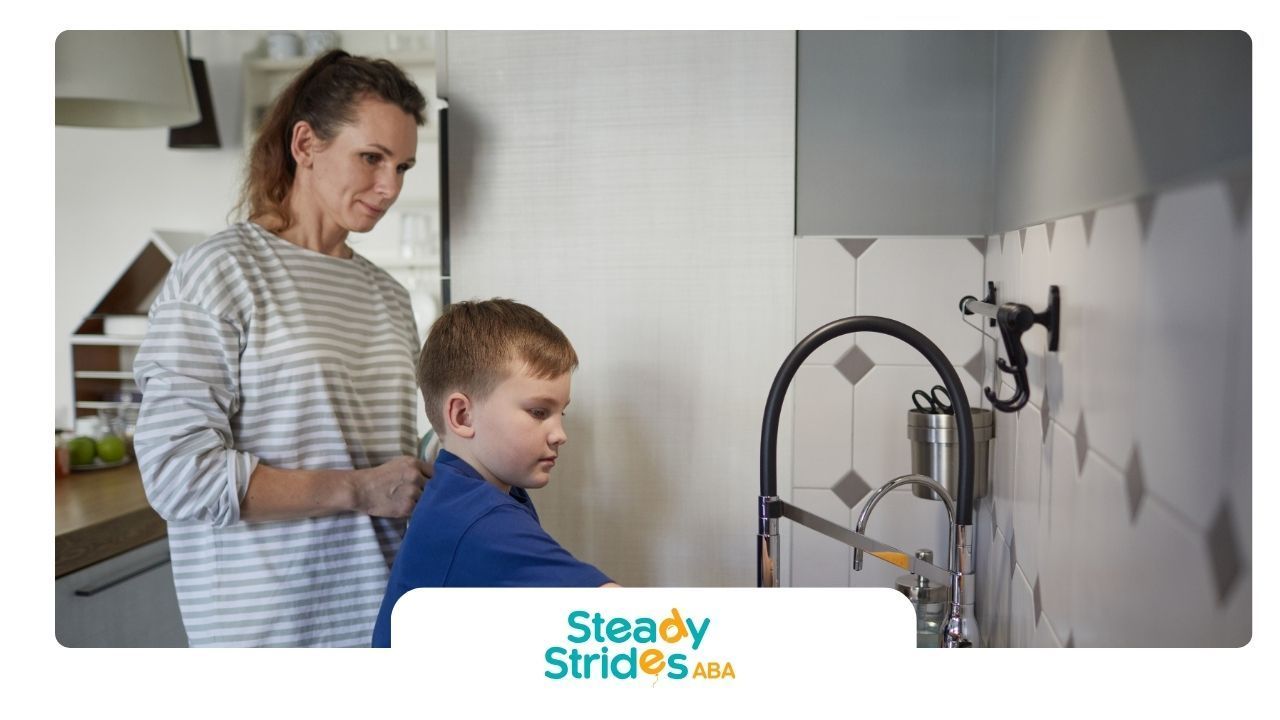Sensory issues—like being bothered by loud sounds, disliking certain fabrics, or seeking constant movement—are common in both children and adults. But when these sensitivities begin to interfere with daily life, many parents and caregivers start to wonder: Are sensory issues a sign of ADHD or autism? Or could they be both?
The truth is, sensory processing challenges can appear in individuals with either Attention-Deficit/Hyperactivity Disorder (ADHD), Autism Spectrum Disorder (ASD), or both. While these two conditions are distinct diagnoses, they often overlap in meaningful ways, especially when it comes to how the brain processes sensory information.
In this blog, we’ll explore:
- What sensory issues are
- How sensory processing works
- The differences and similarities in sensory challenges in ADHD vs. autism
- How to identify your child’s needs
- Practical strategies to help your child thrive
What Are Sensory Issues?
Sensory issues occur when the brain has trouble receiving and responding appropriately to input from the senses. These senses include:
- Sight
- Sound
- Touch
- Smell
- Taste
- Movement (vestibular)
- Body awareness (proprioception)
A child with sensory processing challenges may:
- Be overwhelmed by noises, lights, or crowds
- Refuse to wear certain types of clothing
- Seek out spinning, jumping, or crashing into things
- Have trouble with balance or coordination
- Struggle with grooming tasks like brushing hair or teeth
These reactions aren’t simply “quirks”—they can impact focus, behavior, emotions, and daily functioning.
How Sensory Processing Works
Sensory processing is how the brain interprets information from the environment and from within the body. When functioning properly, it helps us know when to stay alert, when to calm down, and how to move safely.
When the brain has difficulty processing sensory input, it may result in:
- Sensory seeking behavior (e.g., excessive movement or touching objects)
- Sensory avoiding behavior (e.g., covering ears or refusing certain foods)
- Sensory dysregulation, where the child becomes overstimulated or shuts down
These patterns vary widely from child to child and are influenced by neurological differences seen in both ADHD and autism.
Sensory Issues in Autism
Sensory sensitivities are actually one of the core diagnostic criteria for Autism Spectrum Disorder (ASD). The DSM-5 (Diagnostic and Statistical Manual of Mental Disorders) lists hyper- or hypo-reactivity to sensory input as a key symptom.
Common Sensory Patterns in Autism:
- Auditory sensitivity: Covering ears in loud environments
- Tactile sensitivity: Avoiding certain textures or fabrics
- Visual sensitivity: Discomfort with bright lights or busy patterns
- Repetitive sensory behavior: Spinning objects, hand-flapping, or visual stimming
- Restricted food preferences: Based on texture, color, or smell
In autism, sensory challenges often show up early in life and may be persistent. They are usually accompanied by social, communication, and behavioral differences.
Sensory Issues in ADHD
While sensory issues aren’t part of the formal diagnostic criteria for ADHD, research and clinical experience show that many children with ADHD struggle with sensory processing too.
Common Sensory Patterns in ADHD:
- Sensory seeking: Craving movement, touching everything, fidgeting constantly
- Distractibility from sensory input: Difficulty tuning out background noise
- Overreacting to sensory discomfort: Quick to become frustrated by tags, loud sounds, or strong smells
- Difficulty regulating sensory input: Fluctuating between under- and over-stimulation
Sensory issues in ADHD often present as part of overall emotional and self-regulation challenges, and can contribute to difficulties in focus, behavior, and sleep.
ADHD vs. Autism: Key Differences in Sensory Issues
While both conditions can involve sensory processing difficulties, there are some notable distinctions in how these issues typically present.
| Feature | Autism | ADHD |
|---|---|---|
| Onset of Sensory Issues | Often apparent in infancy or toddler years | May emerge later or increase with demands |
| Sensory Focus | More global and rigid patterns (e.g., same routine, same clothes) | More situational and inconsistent |
| Behavioral Response | Often includes withdrawal or meltdown | Often includes hyperactivity or impulsivity |
| Awareness | Child may be unaware or unbothered by intense stimuli | Child may notice stimuli but can’t ignore them |
| Sensory Seeking | May be focused and repetitive (e.g., spinning) | Often varied and impulsive (e.g., running, touching) |
It’s also important to note that comorbidity is common—many children are diagnosed with both ADHD and autism, and the lines between sensory traits in each can blur significantly.
Could It Be Sensory Processing Disorder (SPD)?
Some children experience sensory processing difficulties without meeting the criteria for autism or ADHD. In these cases, a child may be diagnosed with Sensory Processing Disorder (SPD)—a condition that is not officially listed in the DSM-5 but recognized by many occupational therapists and specialists.
SPD can exist on its own or co-occur with other diagnoses. It often involves:
- Extreme responses to sensory input (over or under-reactions)
- Difficulty with coordination and motor planning
- Emotional outbursts tied to sensory triggers
An occupational therapist with experience in sensory integration can assess whether SPD is a contributing factor.
When to Seek an Evaluation
If your child is showing signs of sensory challenges that disrupt their daily life—such as avoiding activities, struggling in school, or having frequent meltdowns—it’s a good idea to seek an evaluation.
Start by speaking with:
- Your pediatrician
- A developmental pediatrician
- A licensed psychologist
- An occupational therapist
- A behavioral therapist (especially with ABA experience)
The evaluation process may include observations, parent interviews, and standardized assessments to determine if ADHD, autism, SPD, or a combination is present.
Supporting Children with Sensory Issues
Whether the underlying cause is autism, ADHD, or both, sensory challenges can be addressed with thoughtful, consistent support. Here are practical ways to help:
1. Create a Sensory-Friendly Environment
- Use noise-canceling headphones or soft lighting
- Offer fidget tools or sensory bins
- Provide a quiet corner or sensory retreat space
2. Establish Predictable Routines
Children with sensory sensitivities benefit from knowing what to expect. Use visual schedules, countdown timers, or social stories to ease transitions.
3. Use Movement Breaks
Kids with sensory seeking needs—especially those with ADHD—often focus better after brief physical activity. Try:
- Jumping jacks
- Wall pushups
- Swinging or trampoline time
4. Work with an Occupational Therapist (OT)
OTs trained in sensory integration therapy can create personalized sensory diets—structured activities that meet your child’s specific sensory needs throughout the day.
5. Incorporate ABA Strategies
Applied Behavior Analysis (ABA) therapists can help your child:
- Learn to identify and regulate sensory triggers
- Develop communication strategies to express discomfort
- Replace problematic sensory behaviors with appropriate alternatives
How to Advocate for Your Child
If your child is in school, consider requesting a 504 Plan or Individualized Education Program (IEP). These legal frameworks can include:
- Sensory breaks
- Modified environments
- Support from a sensory-trained staff member
- Access to adaptive tools
You are your child’s best advocate—don’t hesitate to speak up and request accommodations that support their sensory needs.
Understanding Your Child’s Unique Profile
No two children experience sensory issues in exactly the same way. The key to effective support is understanding your child’s:
- Specific triggers
- Preferences
- Coping strategies
- Communication style
Keep a sensory journal to track patterns, share findings with your care team, and adjust strategies as your child grows and changes.
Final Thoughts
So, are sensory issues ADHD or autism? The answer is: they can be part of both—or neither. What matters most is recognizing your child’s sensory needs and responding with empathy, structure, and the right supports.
Whether your child is navigating a world that feels too loud, too bright, or not stimulating enough, you’re not alone. There are effective tools and therapies to help them feel safe, regulated, and empowered.
At Steady Strides, we specialize in helping children with autism and ADHD develop the skills they need to thrive—sensory challenges included. Our ABA therapy programs are customized to each child’s sensory profile, helping them build confidence and independence at every step of their journey.
FAQs
Can a child have sensory issues without having autism or ADHD?
Yes. Some children experience sensory challenges independently of a formal diagnosis. This may be referred to as Sensory Processing Disorder (SPD), and support from an occupational therapist can be helpful.
How can I tell if sensory issues are due to ADHD or autism?
Look at the broader behavior profile. Sensory issues in autism often include rigid routines and social communication difficulties, while in ADHD, they may be more tied to impulsivity and distractibility. A professional evaluation can provide clarity.
What therapies help with sensory issues?
Occupational therapy with a sensory integration approach is highly effective. ABA therapy can also help by teaching coping strategies and reducing problematic sensory behaviors.
Sources:
- https://childmind.org/article/sensory-processing-issues-explained/
- https://www.oxfordhealth.nhs.uk/wp-content/uploads/2014/05/Sensory-Processing-presentation-February-2014.pdf
- https://www.psychiatry.org/psychiatrists/practice/dsm
- https://pmc.ncbi.nlm.nih.gov/articles/PMC4183255/
- https://familydoctor.org/condition/sensory-processing-disorder-spd













